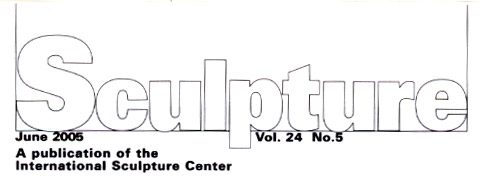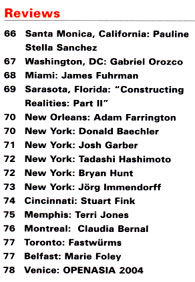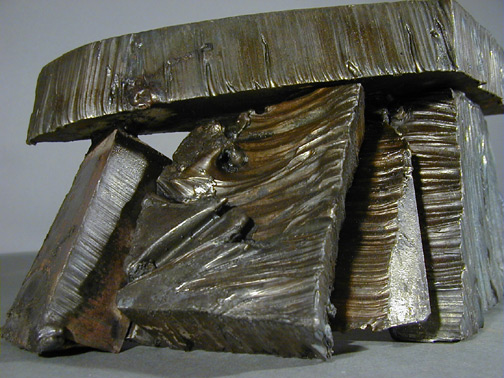


J A M E S F U H R M A N



Is it architecture or sculpture? The late architect Philip Johnson posed this question about England's Stonehenge, a megalith that blurs the boundary between the two. Each stone's placement speaks from a timeless point like a Zen rock garden, each one quietly standing in religious reverence like the prehistoric people who built the structure. The welded steel works in "60 Quests," Pennsylvania sculptor James Fuhrman's show of small sculptures could very well be maquettes for the megaliths and dolmens that dot the European landscape.
They tug at the same heartstrings and yearnings as great monuments to the dead such as the menhirs at Carnac in France, and the connection that indicates that Fuhrman is meditating on occult knowledge and the hereafter. They also provoke contemplation of the stars and invoke our prayers to those who have come before, or perhaps to those who have voyaged far from the earth.
Fuhrman's work is influenced by Buddhism and is somehow at peace with itself. It can quiet the mind much like the interior of an Eastern temple or a Western cathedral. Each piece invokes its own form of meditation and appears crafted by the highest intelligence, an almighty power while never losing its human touch. The sculptures are also individuals that sit and brood like ancient storytellers or religious adepts, pointing the way into the next world while reminding us of the rewards that go to the gentle hearts of this one.
The fact that Fuhrman works primarily in steel and not stone emphasizes the work's permanence, perhaps even eternal life and godliness. And the haiku-like titles reinforce this orientation toward the eternal: After the storm, Sun. Black tree trunks in the Concrete gray sky. Light Glows. The very beautiful Seven hundred crows in the oaks. Caw (2002) seems to whisper of rain, wet Irish turf, alchemy and the black raven. Ambient light clings to it like water between the grooves of cut steel, which promise shelter from the storms of life. It is a prehistoric sanctuary, or cave from which European culture would later emerge. And it is also a portal where we may return in silence and secret.
Often it seems as if the sculptures are dancing, and Fuhrman confesses to being influenced by modern dance choreographer Martha Graham. Time spent studying in Graham technique classes led him to consider how energy flows from the center of the body, and one can see how his work successfully harnesses this power to overcome the inherent static nature of steel. Many of the pieces seem to lean in on themselves, or touch as if they were holding hands or even reach out physically toward heaven and the viewer.
Fuhrman's
curiosity about the great themes of life and death have led to art that follows
in the footsteps of Anthony Caro. Like Caro, Fuhrman continues to examine
in fruitful ways the blending of sculpture and architecture.
--
John Vitale